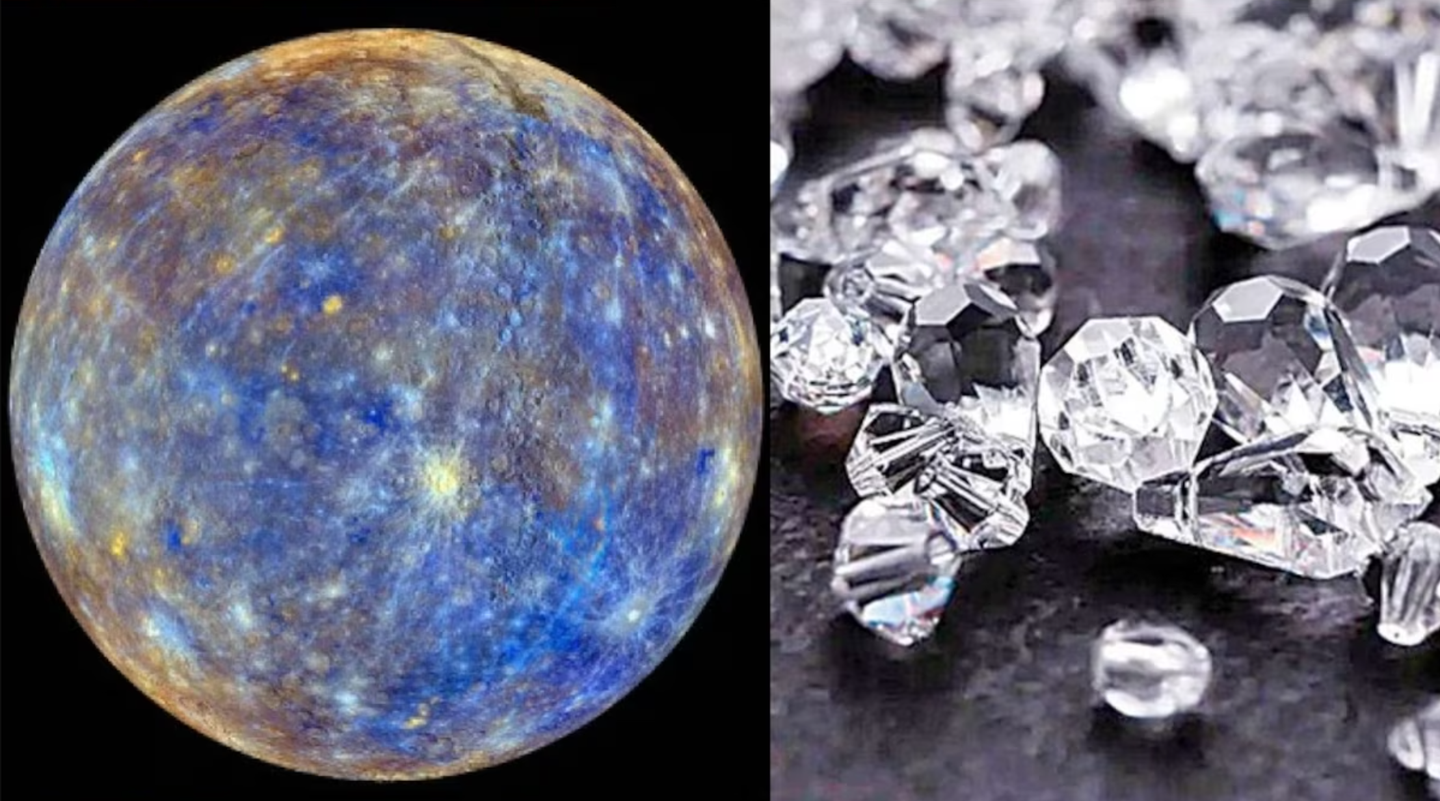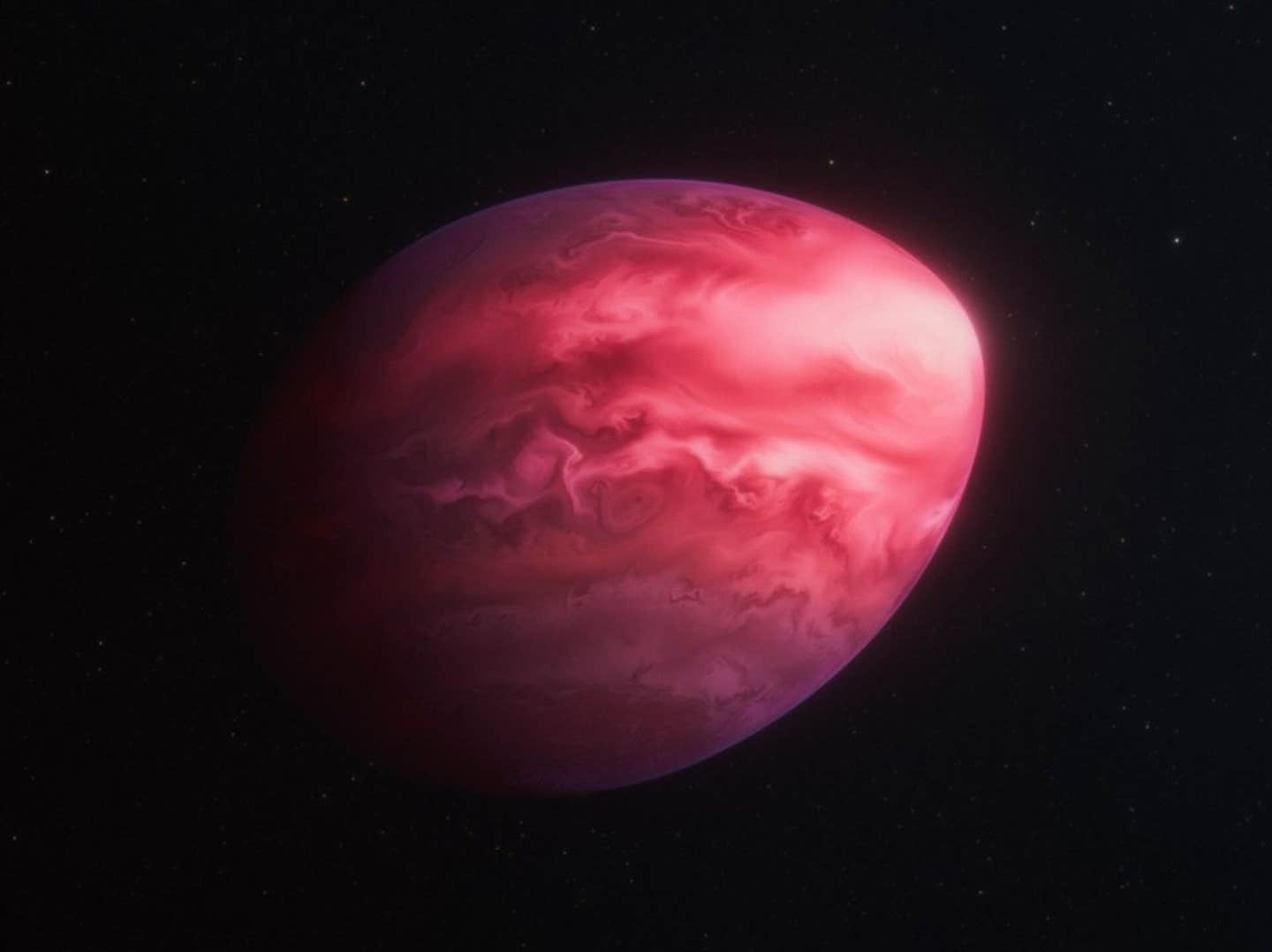Mercury has a 10-mile thick layer of diamonds hidden beneath its surface, NASA discovers
You might be surprised to learn that Mercury, the smallest planet in the solar system, could hold incredible riches beneath its surface.

According to data from NASA’s MESSENGER space probe, scientists believe that Mercury has a 10-mile-thick layer of diamonds beneath its surface. (CREDIT: Creative Commons)
You might be surprised to learn that Mercury, the smallest planet in the solar system, could hold incredible riches beneath its surface. Recent findings from a NASA spacecraft have revealed that Mercury's mantle might be filled with diamonds.
According to data from NASA’s MESSENGER space probe, scientists believe that Mercury has a 10-mile-thick layer of diamonds beneath its surface. These findings are based on analyses of the planet’s surface, particularly the dark-colored patches of graphite, a form of carbon, which have puzzled scientists for years.
These graphite patches suggest that Mercury might have once had a carbon-rich magma ocean. As this magma seeped to the surface, it would have left behind the graphite patches. This same geological process likely created a carbon-rich mantle. However, new data and a reevaluation of the planet’s mass suggest that this mantle isn’t just made of graphite, but diamonds.
“We calculate that, given the new estimate of the pressure at the mantle-core boundary, and knowing that Mercury is a carbon-rich planet, the carbon-bearing mineral that would form at the interface between mantle and core is diamond and not graphite,” explained Olivier Namur, an associate professor at KU Leuven. This revelation implies significant changes in the distribution of carbon, whether as diamond or graphite, on Mercury.
MESSENGER, which stands for "Mercury Surface, Space Environment, Geochemistry, and Ranging," launched in 2004. It became the first spacecraft to orbit Mercury, which it did from 2011 to 2015. During its mission, it mapped the entire planet and collected crucial data about its geology and magnetic field.
The research team, who published their findings in the journal Nature Communications, used a large-volume press to recreate the conditions beneath Mercury’s crust. This involved heating materials to temperatures as high as 3,950 degrees Fahrenheit, allowing them to study how minerals might have reacted in the planet’s early history.
Related Stories
“We believe that diamond could have been formed by two processes,” Namur elaborated. “First is the crystallization of the magma ocean, but this process likely contributed to forming only a very thin diamond layer at the core/mantle interface. Secondly, and most importantly, the crystallization of the metal core of Mercury.”
When Mercury formed around 4.5 billion years ago, its core was completely liquid. Over time, it slowly crystallized. “The liquid core before crystallization contained some carbon; crystallization, therefore, leads to carbon enrichment in the residual melt,” Namur noted. Once a solubility threshold is reached, the liquid cannot dissolve more carbon, leading to the formation of diamonds.
These diamonds, being less dense than metal, would have floated to the top of Mercury’s core. They eventually settled between the core and mantle, forming a 0.62-mile diamond layer that continued to grow over time.
Namur highlighted how this discovery sheds light on the different formation processes of the inner planets with solid surfaces, like Venus, Earth, and Mars. “Mercury formed much closer to the sun, likely from a carbon-rich cloud of dust. As a consequence, Mercury contains less oxygen and more carbon than other planets, which led to the formation of a diamond layer,” he said.
Interestingly, Namur pointed out that Earth’s core also contains carbon, and the formation of diamonds in Earth’s core has been suggested by various researchers. This draws intriguing parallels between Mercury’s and Earth’s geological histories.
Mercury’s potential diamond mantle not only enhances our understanding of the planet itself but also offers insights into the early solar system's dynamics and the formation of terrestrial planets. The study of Mercury continues to reveal surprises, showing that even the smallest planets can hold significant secrets.
Diamonds elsewhere in the solar system
Diamonds have been speculated to exist in various locations within the solar system due to extreme pressure and temperature conditions. Here are some notable examples:
- Neptune and Uranus: The interiors of these ice giant planets are thought to have conditions that could form diamonds. The hypothesis is that methane in these planets' atmospheres could break down under high pressure and temperature, causing carbon atoms to crystallize into diamonds. These diamonds could then sink towards the planets' cores.
- Jupiter and Saturn: Similar to Neptune and Uranus, the high-pressure environments of Jupiter and Saturn might also be capable of forming diamonds. Researchers suggest that lightning storms on these gas giants could convert methane into soot, which hardens into graphite and then compresses into diamonds as it falls deeper into the planets' atmospheres.
- Meteorites: Some meteorites found on Earth contain microscopic diamonds. These diamonds are believed to have formed in the high-pressure environments of space, possibly during the violent impacts or within the parent bodies of the meteorites, such as asteroids.
- Exoplanets: Beyond our solar system, certain exoplanets have been speculated to have conditions conducive to diamond formation. For instance, 55 Cancri e, a rocky exoplanet, has been suggested to possibly contain a diamond-rich interior due to its high carbon content and extreme pressures.
These discoveries highlight the diverse and extreme environments in our solar system and beyond where diamonds could potentially form.
Note: Materials provided above by The Brighter Side of News. Content may be edited for style and length.
Like these kind of feel good stories? Get The Brighter Side of News' newsletter.



